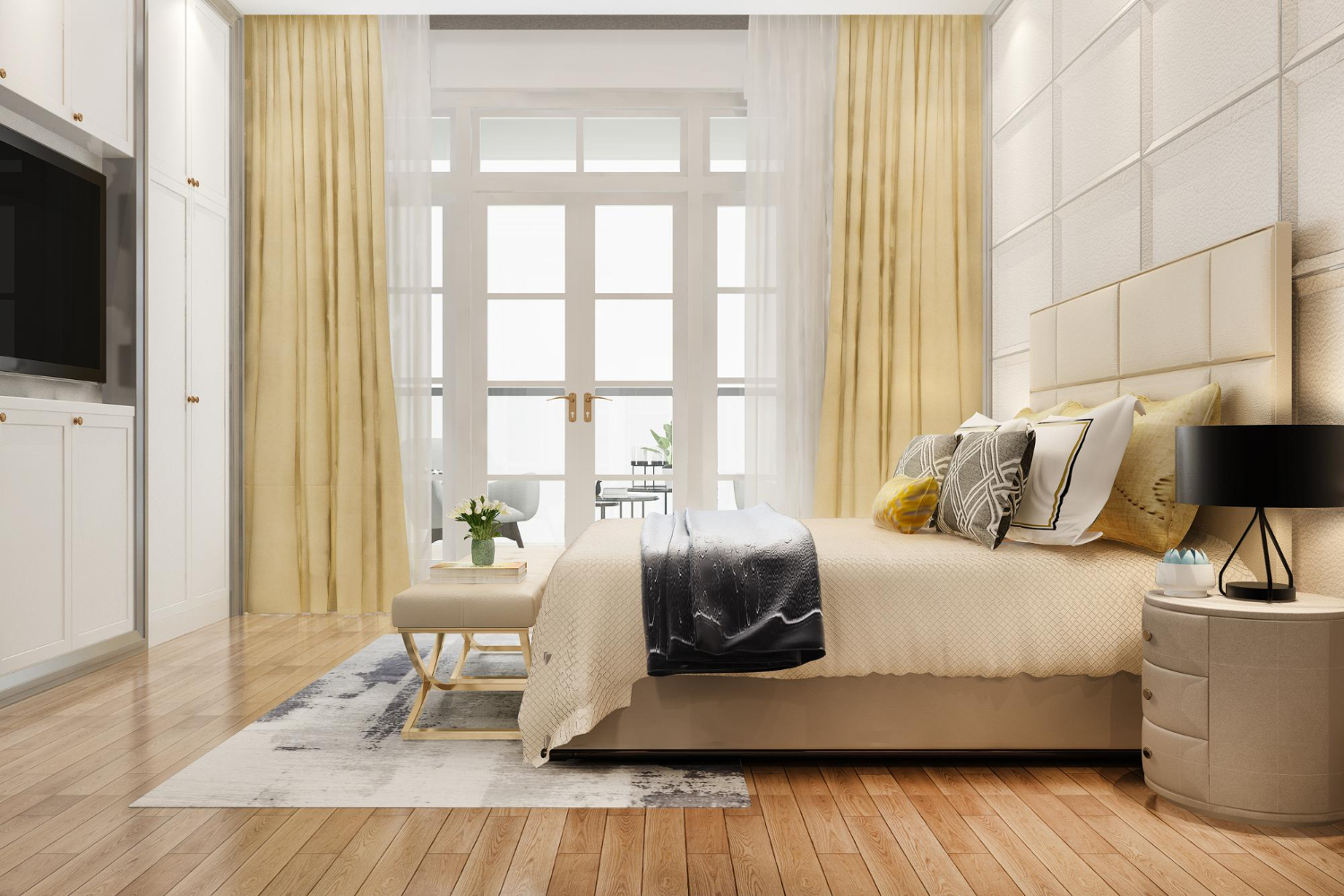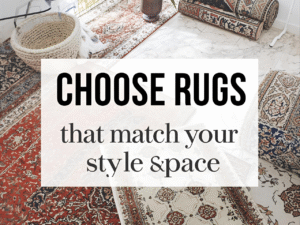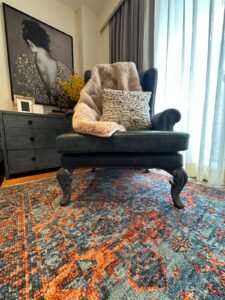Colorful geometric rugs make an eye-catching statement in any room, setting the scene and setting the mood for any space they enter. When choosing curtains that go with this feature without overshadowing it, it is key that color coordination, fabric selection and style considerations be kept in mind when selecting these features. In this blog we explore various curtain options which complement colorful geometric rugs while offering tips for color coordination, fabric selection and styling considerations.
Understanding Your Rug’s Color Palette:
The first step to finding the ideal curtains is assessing your geometric rug’s color palette. Geometric rugs typically offer a mix of vibrant hues, including primary hues, pastels, and metallics – here’s how you can break this down:
Primary Colors: Determine which hues dominate in your rug; these should be the colors that immediately draw your eye. Secondary Colors: Look out for secondary hues used to create patterns and accents in the design of patterns and accents in your rug.
Neutral Tones: When considering neutral tones such as whites, blacks or grays as background colors in your rug design, make note of any neutral tones like white, black or gray that might be present as background hues.
Matching vs Complementing:
After you’ve identified which hues exist in your rug’s colors you can decide whether you would like your curtains to either match or complement them by matching or complementing these hues in their appearance on curtains.
Matching Colors:
Curtains that match perfectly can create an unifying aesthetic in any room. Here are some tips for matching:
Solid Colors: Select curtains in one of the primary colors featured in your rug for optimal effect, especially if it contains intricate patterns. For instance, solid blue curtains could create an appealing balance if it contains both blue and green tones in its design. Pattern Repetition: Curtains that mimic your rug’s geometric patterns with repeating motifs or colors will help create a unified aesthetic without becoming overly busy.
Complementing Colors:
Integrating complementary colors can add depth and interest to any room. Here’s how you can do it effectively: Opposite Colors: Use a color wheel to identify complementary hues to the primary hues in your rug’s design, such as yellow and orange curtains to provide an interesting contrast if your rug features predominantly blue tones.
Analogous Colors: Select colors which lie close together on the color wheel, for instance curtains in either teal or green would pair nicely with a rug featuring blue, green and teal patterns.
Neutral Curtains to Balance the Vivid Rug: Use neutral-colored curtains such as white, gray or beige to give your rug room to shine while toning down its intensity. In terms of fabric options: White is perfect; grey and beige also work. Your curtains can have an enormous impact on the overall aesthetic and atmosphere of a room, so choose fabric carefully when selecting curtains for your windows.
Heavyweight Fabrics: Heavier fabrics such as velvet or brocade add an air of luxury and coziness, perfect for rooms where you want to create an intimate setting.
Textured Fabrics: Textured curtains such as jacquard or embroidered materials add another level of visual interest that complements the patterns in your rug.
Style considerations to remember for selecting curtains:
Modern and Minimalist: For a modern or minimalist room, curtains in solid colors or subtle patterns that allow the geometric rug to become the centerpiece are essential.
Bohemian and Eclectic Style: If your style leans more bohemian or eclectic, don’t be intimidated by mixing patterns. When shopping for curtains with different geometric prints or complementary prints to achieve this vibrant layered effect.
Classic and Traditional Spaces: When selecting curtains with classic patterns like damask or floral that feature colors from your rug, such as damask, for more traditional spaces opt for curtains with classical patterns like damask or floral that complement it to achieve a balanced and elegant appearance.
Here are a few practical tips to help you select curtains suitable for a colorful geometric rug:
Sample Swatches: When purchasing new curtains or draperies for your space, always bring home samples first so you can observe how they appear alongside your rug and lighting conditions. This allows you to see exactly how the colors interact in real-life lighting conditions.
Consider Length and Fullness: Curtain length and fullness can have an enormous effect on their appearance; floor-length curtains often look more formal while shorter curtains can create more of an informal vibe.
Consider Function: Consider what purpose your curtains serve when making your decision – are they to block out light, provide privacy or add decorative flair. Your curtain fabric selection and style selection should reflect this decision.





